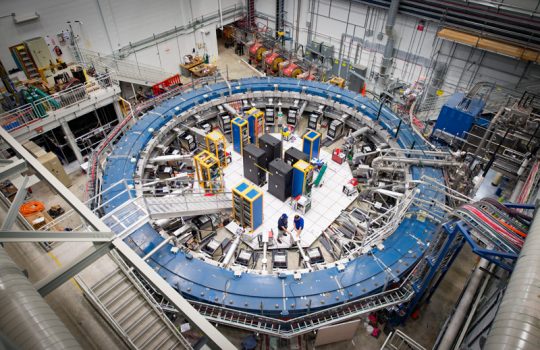Batavia, IL-Officials at the Department of Energy’s Fermi National Accelerator Laboratory today (August 5) announced the start of construction for a system of automatic gates at the Laboratory’s main entrance at Pine Street and Kirk Road. When they are completed in late October, the gates will eliminate the need for guards at the entrance. The Fermilab site will remain open to visitors every day during daylight hours and for special evening events.
In mid-August, construction will begin for a similar automatic gate system at Fermilab’s east entrance, where Batavia Road enters the Laboratory.
Fermilab Associate Director Ray Stefanski cited cost-savings associated with staffing the entrances as the motive for installing the gates. “The gates will pay for themselves in about a year and a half,” he said.
Introduction of the automatic gates will mean some changes for visitors to Fermilab. Those entering the Laboratory by car at Pine Street will drive through an automatic gate, much like the gate to a parking garage. On entering, the driver will receive a paper ticket. When the visitor leaves the Laboratory, bar coding on the ticket will allow the vehicle to exit through an automatic exit gate at Pine Street. Similarly, those entering via Batavia Road will receive tickets allowing them to exit by Batavia Road when they leave the Laboratory.
Both the Batavia Road and Pine Street entrances will be open to visitors daily during daylight hours. The new gates will not affect bicycle or pedestrian traffic at either entrance. Emergency vehicles will continue to have 24-hour access through the Laboratory.
Fermilab employees, experimenters, and others associated with the Laboratory will enter and exit through separate gates operated by bar-coded access cards or vehicle tags. Fermilab will begin testing a prototype of the gates, using employee volunteers, in early September.
Fermilab asks those with questions about the new entrance gates to call the Laboratory’s Office of Public Affairs at 630-840-3351.
Fermilab is operated by Universities Research Association, Inc. for the U.S. Department of Energy.



